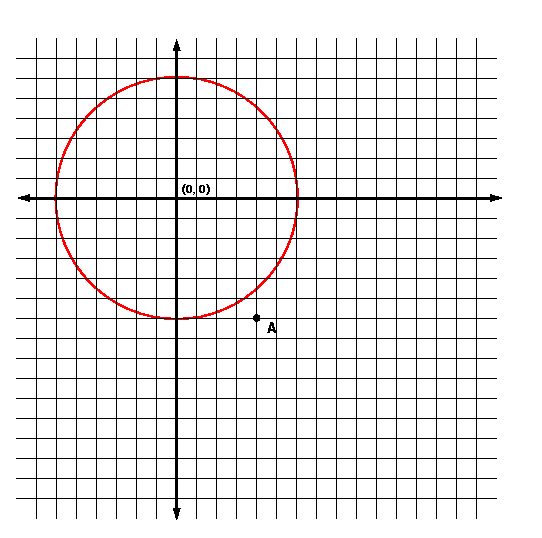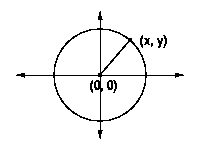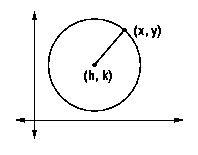Instructions:Answer all the following questions in the space provided. Simplify all answers.
- Identify the centre and radius of the circle defined by:
| a) x2 + y2 = 1 | centre __________ | radius __________ |
| | |
| b) (x - 3)2 + (y + 4)2 = 24 | centre __________ | radius __________ |
| | |
| c) x2 + (y - 7)2 = 121 | centre __________ | radius __________ |
- A circle centred at the origin has a radius of (Ö5)/ 2.
a) Sketch the graph of this circle on the graph paper provided.
|  |
| |
| b) Write the equation of this circle in standard form. | ______________________________________ |
| |
| c) Write the equation of this circle in general form. | ______________________________________ |
- A circle centred at (-7, -5/2) has a radius of 5.
a) Sketch the graph of this circle on the graph paper provided.
|  |
| |
| b) Write the equation of this circle in standard form. | ______________________________________ |
| |
| c) Write the equation of this circle in general form. | ______________________________________ |
- Describe the effect that varying h, k and r in the standard equation (x - h)2 + (y - k)2 = r2 has on the graph of a circle by completing the following chart.
The Effect of h, k and r on the graph of (x - h)2 + (y - k)2 = r2.
| Variable | The value of the variable decreases | The value of the variable increases | The value of the variable is 0. |
|---|
| h |
|
|
|
| k |
|
|
|
| |r| |
|
|
|
- The equation x2 + y2 - 8x + 20y + 67 = 0 defines a circle.
a) Determine the centre and radius of this circle.
| Centre: | __________
Radius: |
__________
| |
b) Sketch a picture of the circle on the provided graph paper.

- What must be true of the distances between 0 and each point A, B and C, if A, B and C lie on a circle whose centre is (0, 0)?
- If the equation Ax2 + By2 + Cx + Dy + F = 0 defines a circle, then what must be true about the values of the coefficients A and B?
- A circle is formed when a horizontal plane cuts a double-napped cone.
Describe what happens to the circle as the horizontal plane:
a) moves closer to the vertex
| 
| b) moves away from the vertex
|
c) cuts the double-napped cone at the vertex
|
- The following circle is centred at (0, 0).

a) What is the radius of this circle? Radius = __________
b) Write the standard equation of this circle. ________________________
c) If the radius of the circle remains constant, then what would be the standard equation of the circle centred at the point A = (4, -6)?
d) Sketch the translated circle in the above graph.
e) Explain how the circle was translated.
- A circle is defined by the standard equation (x + 4)2 + (y + 6)2 = 169 and x2 + y2 + 8x + 12y - 117 = 0.
a) Show that these two equations are equivalent.
b) When two equations are equivalent they have identical solution sets. Verify that the point (-9, 6) is a solution of both equations.
- In the form x2 + y2 = P, a circle exists when P > 0.
In the form x2 + y2 + F = 0, a circle exists when F < 0.
Show how these two statements are saying the same thing.
- Explain or use the provided diagrams to show how either the distance formula or the Pythagorean Theorem can be used to:
a) Derive the standard equation of a circle centred at (0, 0).

b) Derive the standard equation of a circle centred at (h, k).

|






